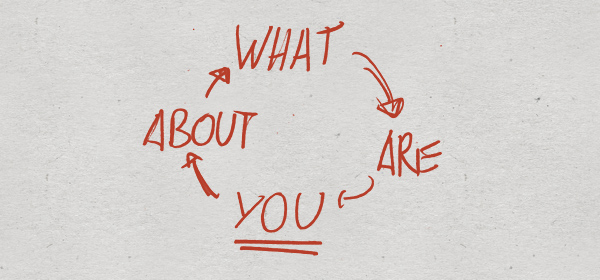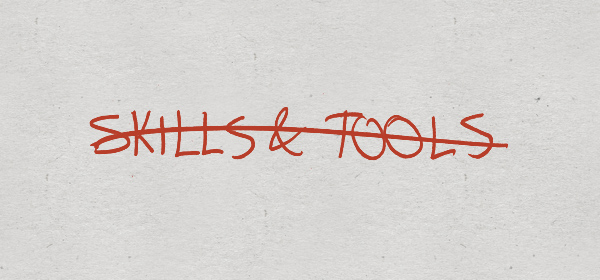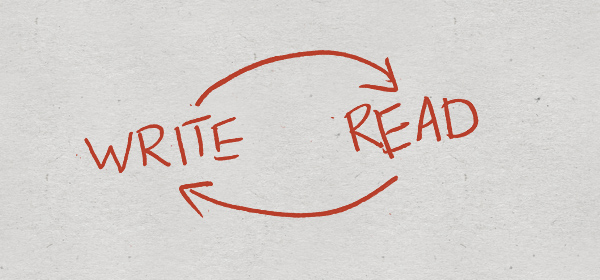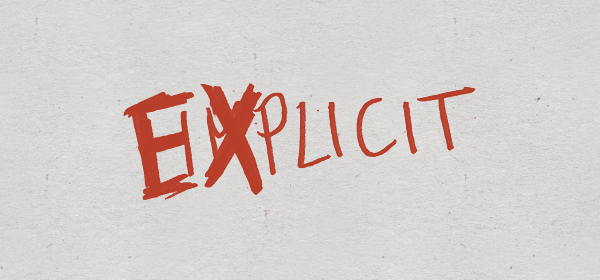Start Creating More Value by Changing Your Positioning
I believe in the power of design. Well done design has the potential to empower people. Design can solve problems, that have not yet been uncovered. But the reality is, that designers often are viewed as decorators or superficial fixers. But what makes this line of work so great, is that we have the potential to help people move forward with their passions, businesses and sometimes make lives easier.
I want you to be successful at this. In order for this to work, you have to change how you are seen by possible clients. You have to bee seen as the investment you are, not a cost factor and failed artist. To help you with this I put together some steps, that can help you how you position yourself as a designer in order to create more value for clients and be valued more by them.

What are you about?
Being a design professional comes in a lot of shapes. There are so many different areas to niche down to. From product design and industrial design to icons and typefaces, you can find a huge list of areas to work in. Not one is better than the other. Each of them has its own complexities and problems. To figure out where you want to go with your work, think about what you are good at now. Then think about, what you want to be known for in five years.
I myself used to think of myself as a pretty good typographer. I was designing a lot of books during and straight after university. I never did that 5-year projection myself in the past. If I had to reconstruct it, it would sound like the following: "Working with interesting clients on compelling projects in a collaborative way”. Sounds pretty cheesy, but it’s true.
In my case, no part of my projection was connected to the medium I was focusing on before. My projection focused on the types of projects and the way of working instead. These are aspects of process and choice of clients. They are not linked to a product and not linked to my experience or skill level in any way.
I realised in my first job, what interested me the most was not the end-result but the approach towards it. The design process and conceptual work sparked more interest for me than the outcome. What I liked most had nothing to do with what I was focusing on for a long time. It was a mere part in the things I was striving to. In the end this fact made got me thinking about my work and ended up in starting Thinking Design in the first place.
So before you start defining or positioning yourself in any way, you should take a step back. Look at your work from the last months and think about it in a critical way. Here are some questions you could ask yourself. Be sure to write down the answers.
- Why did I choose to work on this particular project?
- Which aspect of the project did I enjoy most?
- Which aspect of my work was the most valuable to my client?
- How could I have made the project more valuable for the client?
- How could I have enjoyed the project more?
I bet you can see a pattern emerging from your answers. This pattern is your starting point. Your answers will hold the core of what it is you like and what you are pretty good at. Look at your answers again, and ask yourself, “why did I answer them this way”. Try to boil it down in one or two sentences you can completely relate to. What you will end up with is your mission.
I was using these questions to reevaluate a branding project I did a few months back. My answers looked something like this:
- What I liked about the project were the different parts of a business we combined in a compelling way.
- Talking with the client and finding out, what they are struggling with. Also, working on a system to bring things together.
- Creating a system that was easy to understand, applicable for every department and created visually interesting results.
- Focusing on the way the design would be used after I finished the project. Creating something that is easy to use for the client.
- Being brave enough to tackle points in the conversation, that I thought were not within my authority.
What I distilled for myself was that I liked working on complex problems in a system-oriented way. I am enjoy it because, I tend to ask a lot (and sometimes uncomfortable questions). What I still have to work on, is combining my tendency to ask a lot with client communication. This will result in a more collaborative process. Also I may have to think about presenting consulting as one of my services. And there it was: A focus, a mission and a goal for improvement.
This kind of reflection can help you to trigger a thought process about your own work. Start to boil it down and find a short description (like a mantra) you feel comfortable with. Soon this statement will guide you as a fix point. You should come back to the exercise from time to time to re-check where you are going. A reflection like this will refine your positioning and your awareness of your own strengths.

Skills and tools don’t matter.
A lot of designers came to design, because they were creative and talented in some kind of craft from early on. When we start to educate ourselves more in the field, the first thing to learn are tools and rules. We also tend to surround ourselves with people of our own “tribe”. We love to discuss styles, techniques and tools and we care about them deeply. The thing is, your clients don’t.
They care only as much as they have the impression you know your stuff. What they do care about is wether you will be able to help them. A bar graph showing your skills in Photoshop, Illustrator and CSS won’t do that. For a client a lot of completely different traits are important. They value reliability, conceptual strength, understanding their needs and communication.
Not only for your client, but for yourself it is valuable to stress this. Your technical skills and your tools are not what made you the designer you are now. And they will not bring you to the next level. I want you to go back to the exercise at the beginning and have a look at your answers. I bet at least some aspects have nothing to do with technical skills. The next time you plan to watch a tutorial, rather head to those answers and think about what you can do to advance a non-technical skill.
This type of things may be considered “soft-skills” like communication and reliability. But looking at your process, there are a lot of steps and methods you use, that are not linked to a technical skill. Some of those examples could be:
- How you find out what the client really needs
- How you conduct research in the market
- How you come up with ideas and concepts and document them
- How you sort out concepts and refine them
- How you iterate on execution and test it
- How you present your work (nope, not a soft-skill)
This list could go on and on and none of them have to do with how good you now Photoshop or typographic rules. These steps are the critical part of your work. Can you make up a mediocre execution with a perfect strategy and compelling concept? It is not what we are aiming for, but likely yes. You can always take more time and refine execution. Are you also able to make up a flawed problem definition and weak concept with a perfect execution? Not really, right?
What will make you stand apart in the long run is your unique approach to projects, not your technical treatment. If the strategic foundation of your project is not solid, no star architect can save you from the appearing cracks in the wall.

Think about your process, write it down, read it, make it better.
The crucial question with all the different aspects of your work is how they all come together in a project. Every step – from bringing on the client to final delivery – is part of your design process. Everybody has some kind of process, but not everyone is intentional about it. An outlined process can help to balance the quality of your output and make your work more efficient.
If you do not have a written process, go back to your last project and reconstruct it. Start in the early beginning: the first contact with the client. From there on just note down every step you feel was significant. There you go, a first rough draft.
When you finished your list, take a look at it again: Are there any points that should be more detailed? For example “ideation phase” is very abstract. Dig deeper. How many concepts did you work on and why? What were the steps you took in ideation? How did you document it? Taking your processes apart into small units will help you to identify strengths and weaknesses later on.
When you remember that project, did anything turn out exceptionally good or bad? If so, link those experiences to steps on your list. Try to remember what happened in detail. You should be able to find a connection between the steps you took in your process and the consequences. If things did not go right ask yourself: How could I have prevented this? There may be different solutions to this: You could need to add a step in the process, or re-arrange steps. Go on and think through it. Treat your process like a boring love story. You want a compelling story, you want a great ending, but you should cut out all the drama.
Like with our first thought-experiment, the process you will come up with is not set in stone. It will not apply perfectly for every project. It will change with experience and that is great. Iterate on your process, see what works. Re-write it from time to time. Talk to your peers about their process. Use your process chart intentionally as a tool. It is there to make your work better. Consider your process a light tower. It is guiding your actions and helps navigation, but you still have to steer the ship.
A written process will also make other parts of the process itself easier. It can help you to scope projects, since you can build the project timeline from process steps. It is useful to compare a new lead based on the process you consider fitting and not based on the deliverables. A written process is a lot more than a prescriptive sheet of paper. It is a thinking tool.

Make the implicit explicit – How to stand apart and be authentic
I want you to take a step back now and think about the take-aways of these little thought experiments. Only by asking simple questions and writing down the answers we tackled three challenges:
- Identifying your real strengths and interests
- Considering non-technical aspects of your work
- Writing and refining your process
It is a great place to start, having those things in order. But there is one more thing I want you to ask yourself now. What parts of your process, mindset and approach are most valuable to your client?
Now compare your answer to what you are communicating in public and your positioning. Do those two align? If they don't, you now have the potential to re-align what you are good at, enjoy and the way you work with what you are known for. Start talking about what makes you special.
Are there aspects in your process that are important that you are not talking about now? Make those aspects visible to your client and audience. Look at your process and your strengths. Which aspects come so naturally to you, that you don’t consider them special? Often those are the traits that make the biggest difference. Speak about your approach, strengths and process with confidence. Your positioning will become stronger, more authentic and you will start to stand out.
With your changed positioning something else will happen: Clients will start viewing you differently. They will identify approaches and processes they value in your communication. You enable them to see the value in the things nobody else talks about. This can also result in a change in pricing. If the client sees the value in an intensive research phase, you should put a price tag on it. Make the implicit aspects of your work explicit and you will be able to be more selective about clients, price higher and do better work.
I hope these thoughts helped you in the way you think about your positioning and process. To end this I have one question for you. I am thrilled to hear your answer to it:
Have you ever discovered an aspect of your work or approach, that you took for granted before, and realised that it actually is very important to who you are as a designer?
You can contact me through the site, or jump over to Twitter to join the conversation!